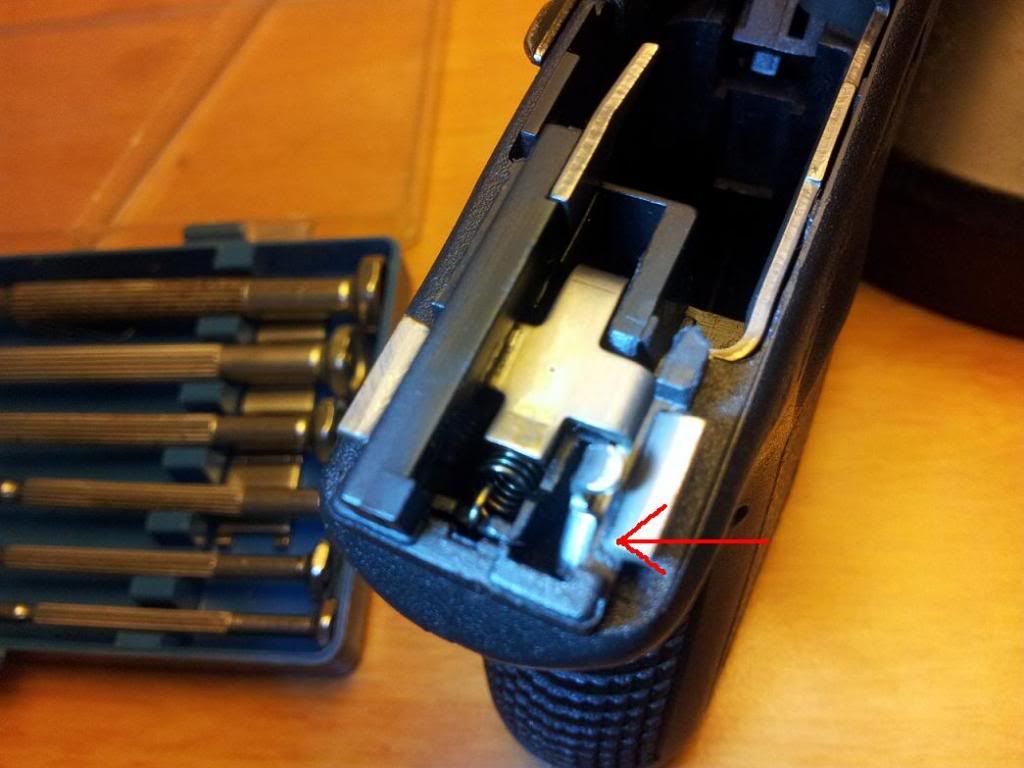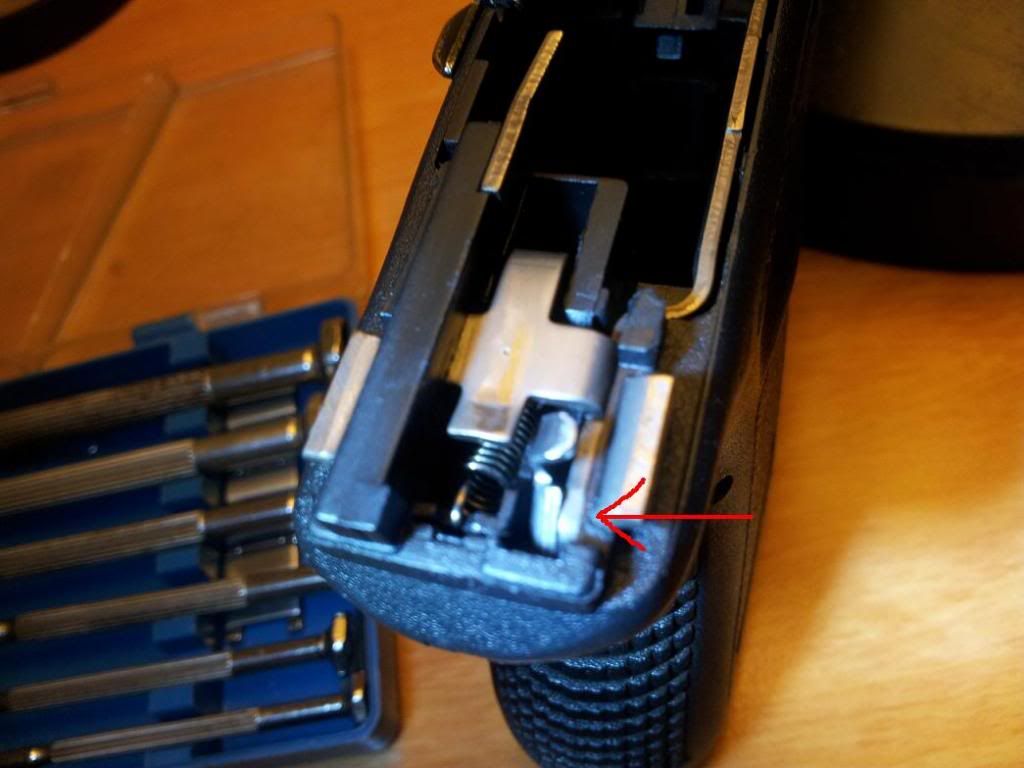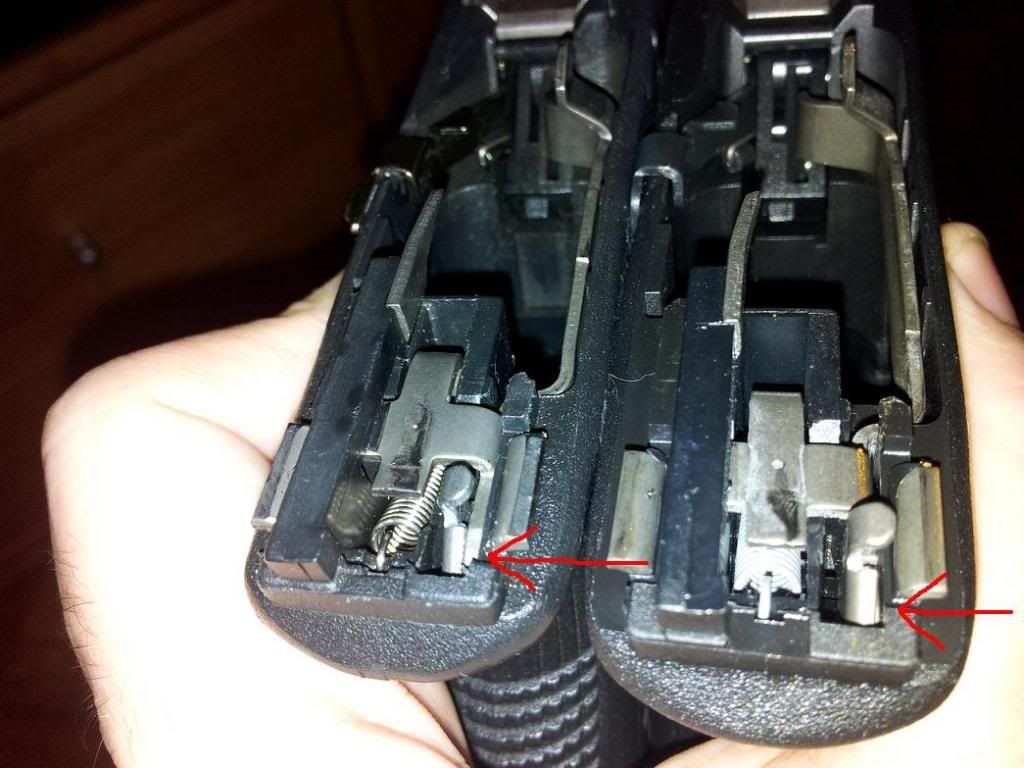Hello all !!!
I´m new to this interesting forum and I´m glad to be here
I own three Glocks (a G21, a G17 and a G26), and I love them...
The last Glock I´ve bought is the G26. I´ve purchased the first two as brand new pistols, but the last one is a preowned one, so I´m not sure about its real condition.
I´m a little bit worried - well, maybe not just "a little bit" - about the "interface" between the connector an the trigger bar.
I took some pics so you can see the "problem".
In the the first one, the red arrow shows the proper way the two pieces should interact...
The second one shows the same point of contact, but in the way I´m not sure it should be.
The third is for you to compare.
What do you think guys?
![Image]()
![Image]()
![Image]()
I´m new to this interesting forum and I´m glad to be here
I own three Glocks (a G21, a G17 and a G26), and I love them...
The last Glock I´ve bought is the G26. I´ve purchased the first two as brand new pistols, but the last one is a preowned one, so I´m not sure about its real condition.
I´m a little bit worried - well, maybe not just "a little bit" - about the "interface" between the connector an the trigger bar.
I took some pics so you can see the "problem".
In the the first one, the red arrow shows the proper way the two pieces should interact...
The second one shows the same point of contact, but in the way I´m not sure it should be.
The third is for you to compare.
What do you think guys?








